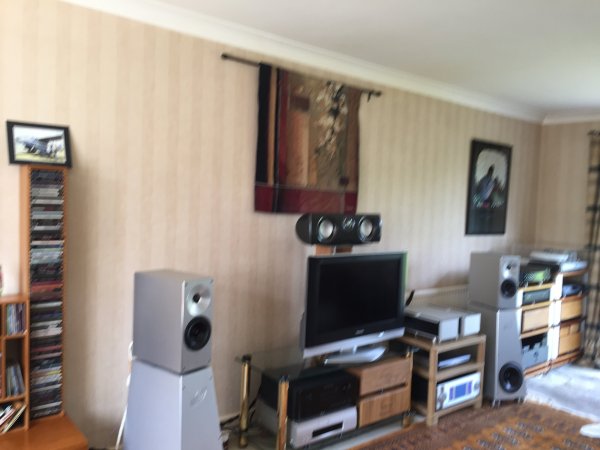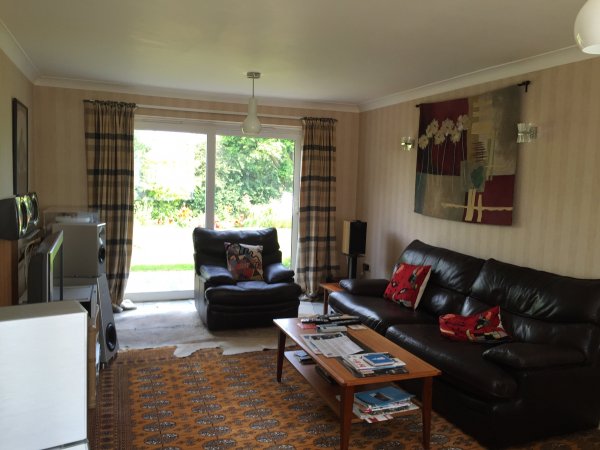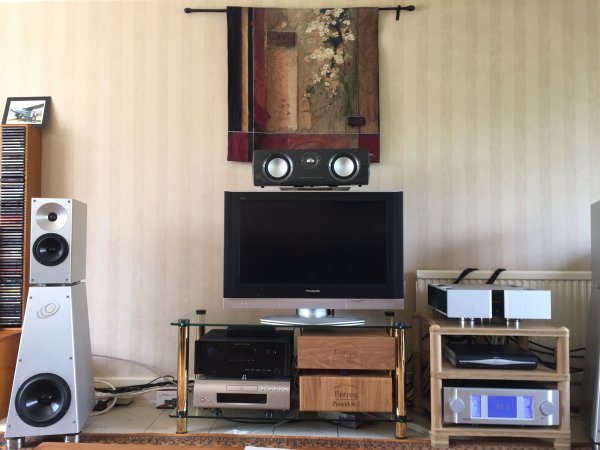An Antipodean thought.
Nothing really new from me (after all, we are all more or less forcing open doors) but an attempt to synthesize the multitude of expressed views by others, under the prism of my own experiences. The room, as an integral component of the reproduction system, needs to be approached in the same way that we endeavour painfully to optimize our other components as a TOTAL system. But optimization need not be absolute, for this is impossible.
We pursue our optimization goals based on our knowledge, empirical or scientific (empirical in my case), preferences, budgets and our expectations demanded from our systems to satisfy our audio ideologies, even peculiarities. Believability is a function of many objective variables, not to mention subjective definitions\perceptions.
Assuming we have a room which is relatively conducive to good sound (mine is irregular and approximately 10 metres long, 5.4 wide and 3 high), and a competent system of high resolution and transparency - amongst other desirable parameters - AND if the elements in the recording which comprise believability EXIST, then REALISM, NOT REALITY is unquestionably feasible\attainable.
I've used this analogy before: A crow cannot be turned into a nightingale! ( see footnote 1). My perception of believability is based on my triptych: Amateur but dedicated player, recordist and listener. My collective system is more than capable - the recording is by far the weakest link - to offer me vividness, palpability, directness of expression, spatial and temporal resolution and an unforced energy and naturalness (mainly due to the intrinsic properties of the speakers) thus allowing me to immerse myself in the re-enactment of a musical event.
My methodically matched system is based around electrostatic speakers, forming an equilateral triangle with the "bittersweet" seating spot (see footnote 2), away from the rear wall. My non-scientific but musical ear tells me that my room does not produce nasty, unpleasant anomalies but I do not rule out further improvements. In summary, for the reasons already outlined, the recorded musicians are convincingly brought into my listening room, allowing me to be part of the event. Believable as the event is made to be, I have no delusions about it being the real thing. If I want musicians in person, I bring them to the same room to record them.
Footnote 1: fas42 often gives me the impression that he can perform miracles, i.e turning "crows" into "nightingales", either by extraordinary technical abilities or transcendental powers! How mediocre speakers can be turned into "nightingales" is beyond me. Believability is one thing, faith is another! By the way, I admire your conviction, implicit dedication and vigorous input for the enjoyment of our eclectic hobby. As we say in Greek, you are the parsley of our hobby!
Footnote 2: Similarly, most of my music is infused with bittersweet ingredients, whether vocal or instrumental.



















